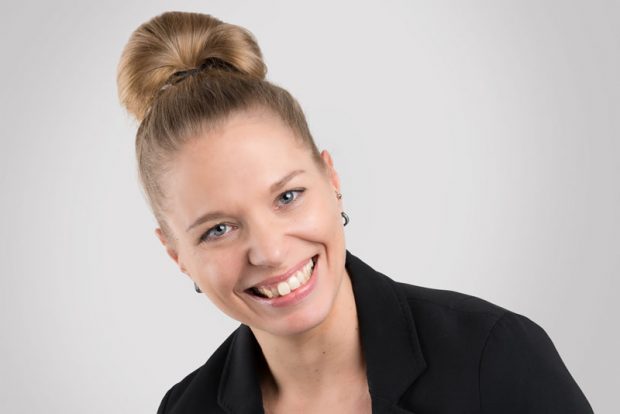Despite the industry or organization, we live in the world where customer has the bargaining power more than ever before. This has led companies into desperate seek of ways to beat their competitors; some by innovating new products or service, which unfortunately is quite short-sighted, while the other companies focus on finding long-term success factors by researching the ultimate needs and desires of the customer and using those findings to transform them into more customer-centric organization.
According to Gartner, customer-centricity is to understand and meet the expectations of the customer. Forbes recommends having deep discussion with key stakeholders in order to provide services with extra twist of special, tailor-made experience inside it. Harvard Business Review brings the last twist into the concept of how to build customer-centric organization; the company culture has to be aligned with the customer needs. Seems quite easy to do but is it?
Start by Identifying the Barriers for Customer-centric Way of Working
My thesis focused on developing a new, customer-centric service model as the main business problem identified in the beginning was that company has over 40 different ways of working which comes from the number of employees of the company. You can only imagine the huge waste of resources, time and money but in addition, customers were not satisfied at all to the service. The on-going discussion around customer-centricity did not give me any practical advice on how to approach the issue in the case company. Thus, my investigation went deeper, and I ended up finding the framework of Jay Galbraith, the star model, which is used to design dynamic and customer-centric organization, step by step in a structured way.
Validated Framework Keeps Your Work on Track – So Do The Customers!
Star model framework can be used in many ways. In my thesis, it was used to analyse the current state of the service which brought out the weaknesses and strengths of the current service model. The framework has five dimensions which are in relation to each other, some more tightly than others. The strategy at the top is the key and pointing the direction and challenging you to think have you included your customer in it and how have you actually done it.
Next dimension will verify the previous as the structure should be aligned according to your company’s customer-centric strategy. If all good so far, you can move on to next dimension, which is information and decision processes and flow referring how seamlessly and effectively information moves inside and outside of the company. After that you stop in the fourth dimension which is rewards. Rewarding people according their behaviour and results against customer-centric strategy is highly important and has to be considered carefully when building the model. The final dimension, people, is focused on creating right kind of culture and resource pool through right kind of recruitments, which refers to know-how and mindset of employees.
Application of this model revealed that case company hadn’t really ever made any real or compelling service promise to customers on which they could commit themselves to and the same applied to the employees. As the research also revealed service delivery related issues which needed to be solved, it became clear what needed to be done. As an outcome of the thesis, the new customer-centric service model was built together with the customer and employees. Why do you think all these stakeholders were involved to the creation process? Answer is simple; customer-centric development work is always done together with a customer and internal stakeholders. Customer´s needs, desires and wishes cannot be decided on their behalf by the company management or employees. As an outcome in this case, the service model included the service promise, service delivery in addition to customer-centric service measurement and rewarding methods. All the key and standard elements of customer-centric service.
Why You Need to Find Your Way into the Customer´s Heart?
You must be wondering how this can be the invincible competitive advantage for your company. Think for the moment. Can the outcome be something your competitors copy and put in practice? Answer is clear, no they cannot. The outcome created together with you and your customer will always focus on building emotional bond between you and your customer and that is where the competitive advantage comes from, winning the heart of your customer.

Katja Kokko is just graduating from Metropolia UAS as a Master of Business Informatics. (Photo by Matti Rajala)
Additional info:
Due to the case company policy, thesis isn’t available in Theseus. For further information, please contact:
Katja Kokko
Pia Hellman
Recommended books:
Designing the customer-centric organization: a guide to strategy, structure, and process, Jay R. Galbraith
Designing Dynamic Organizations: A Hands-On Guide for Leaders at All Levels, Jay R, Galbraith, Diane Downey and Amy Kates
Sources:
Davis, Jennifer (2018). Get Paid for Paying Attention: 4 Lessons In Customer-Centricity. In Forbes.
Accessed December 13, 2018.
Galbraith Management Consultants (2018). Star Model. In Galbraith Management Consultants.
Accessed December 13, 2018.
Garner, Benson (2015). Implementing Your Business Model With the Galbraith Star Model. In Strategyzer. Accessed December 13, 2018.
Goasduff, Laurence (2018). Is Your Organization Customer-centric? In Gartner.
Accessed December 13, 2018.
Yohn, Denise Lee (2018). 6 Ways to Build a Customer-Centric Culture. In Harvard Business Review.
December 13, 2018.
The image: Pixabay.com









Ei kommentteja